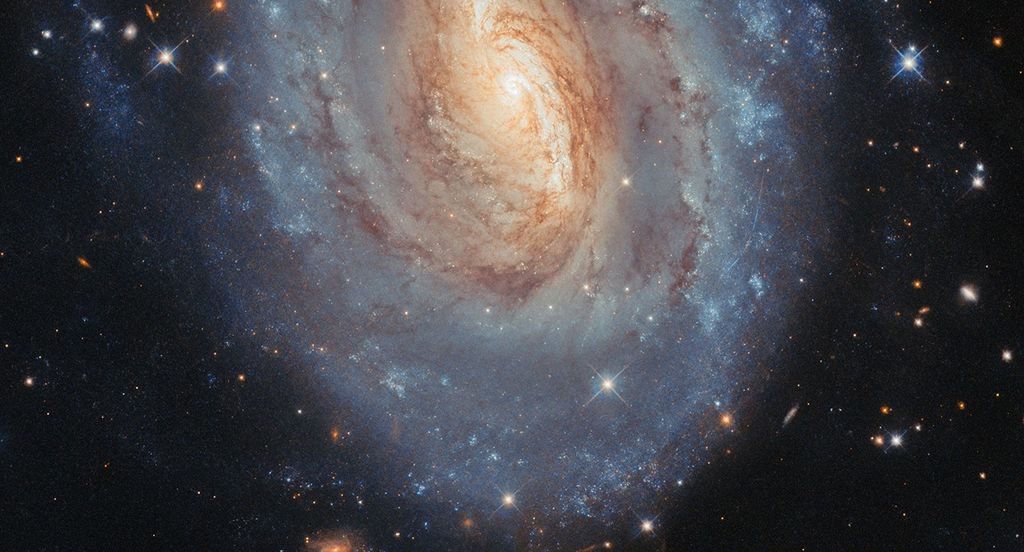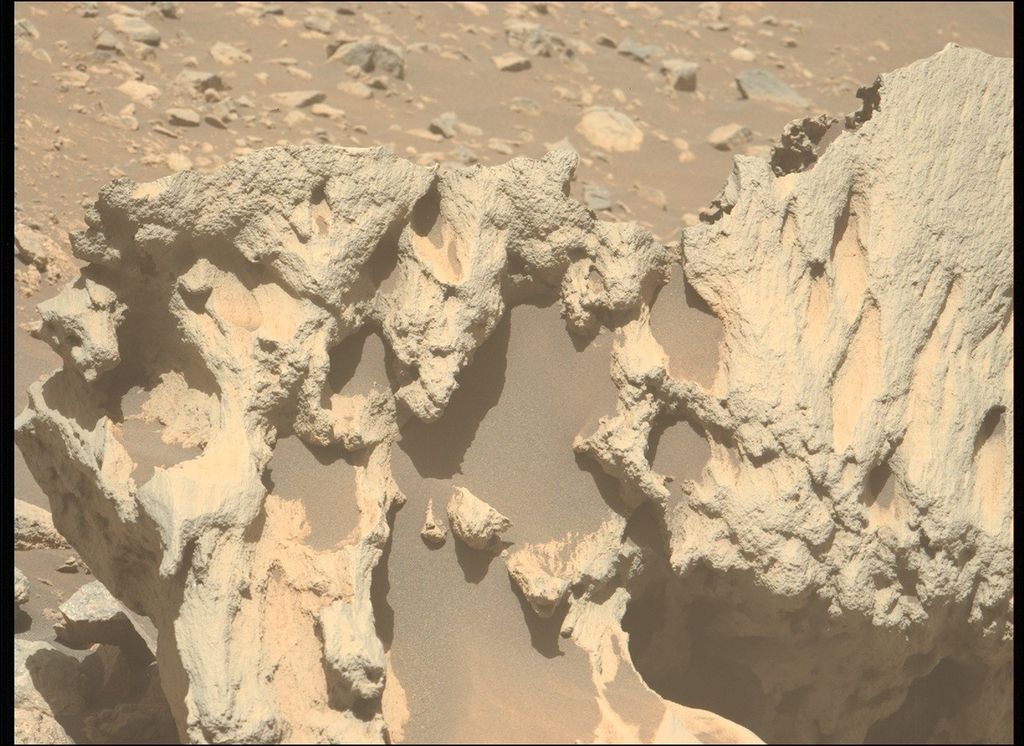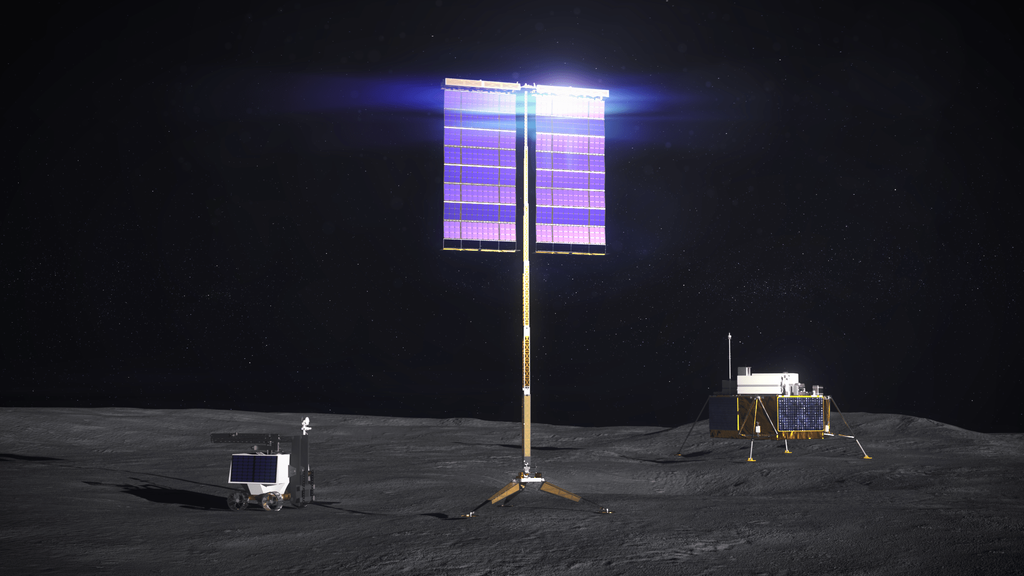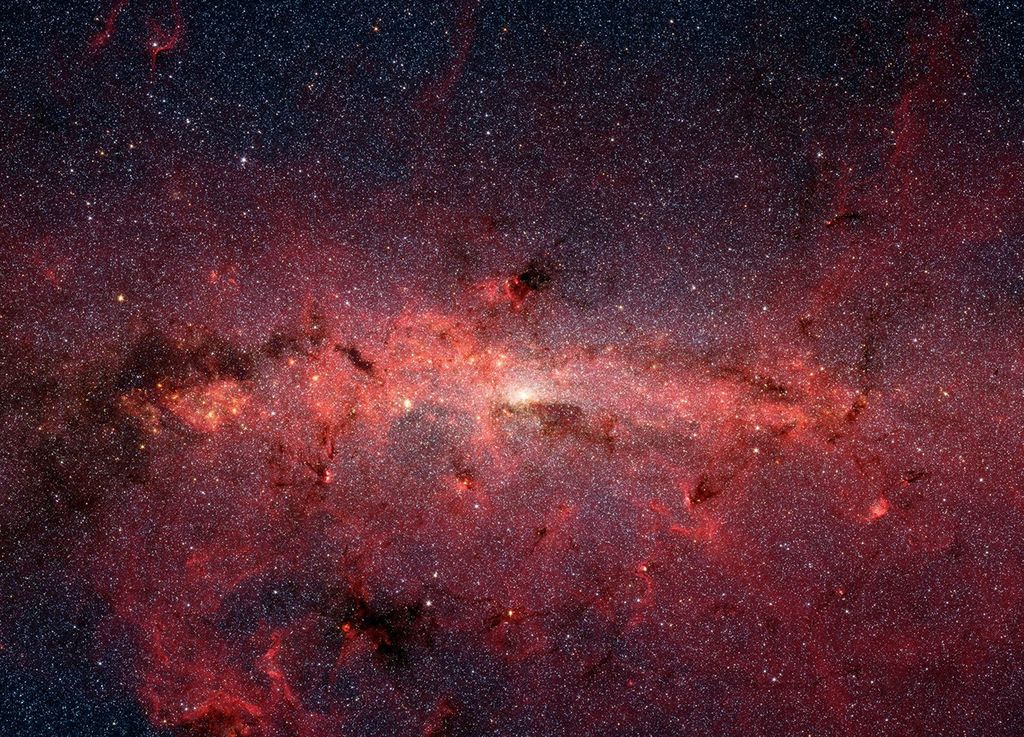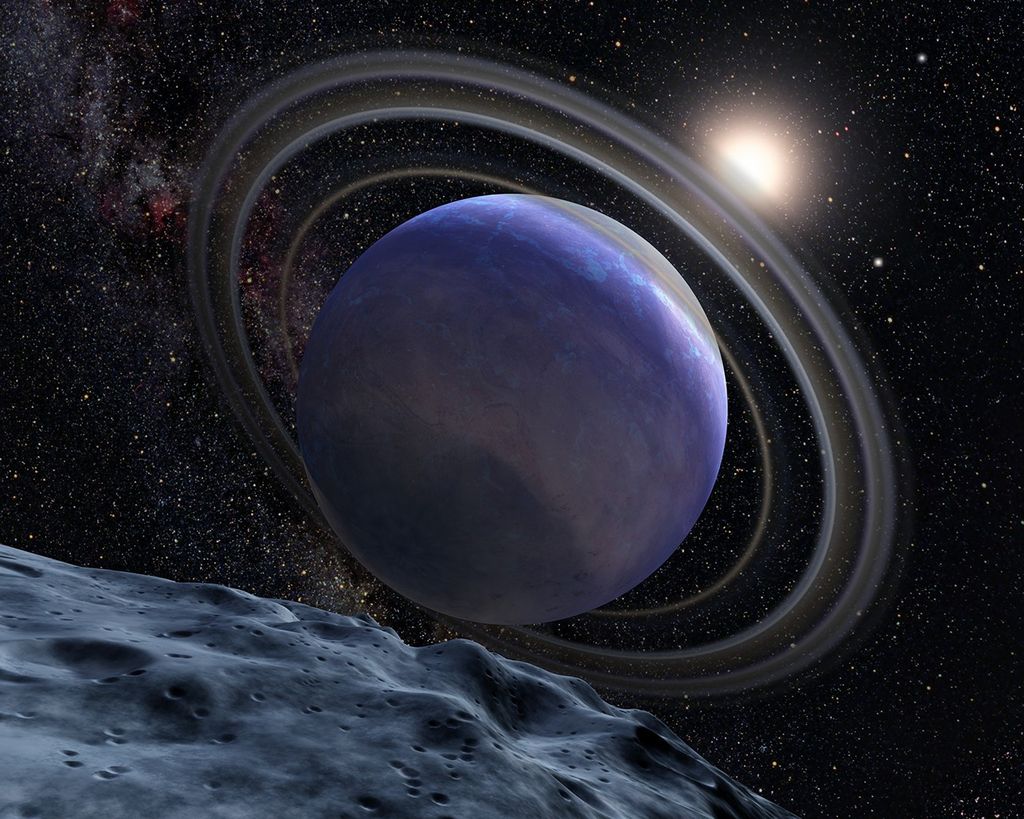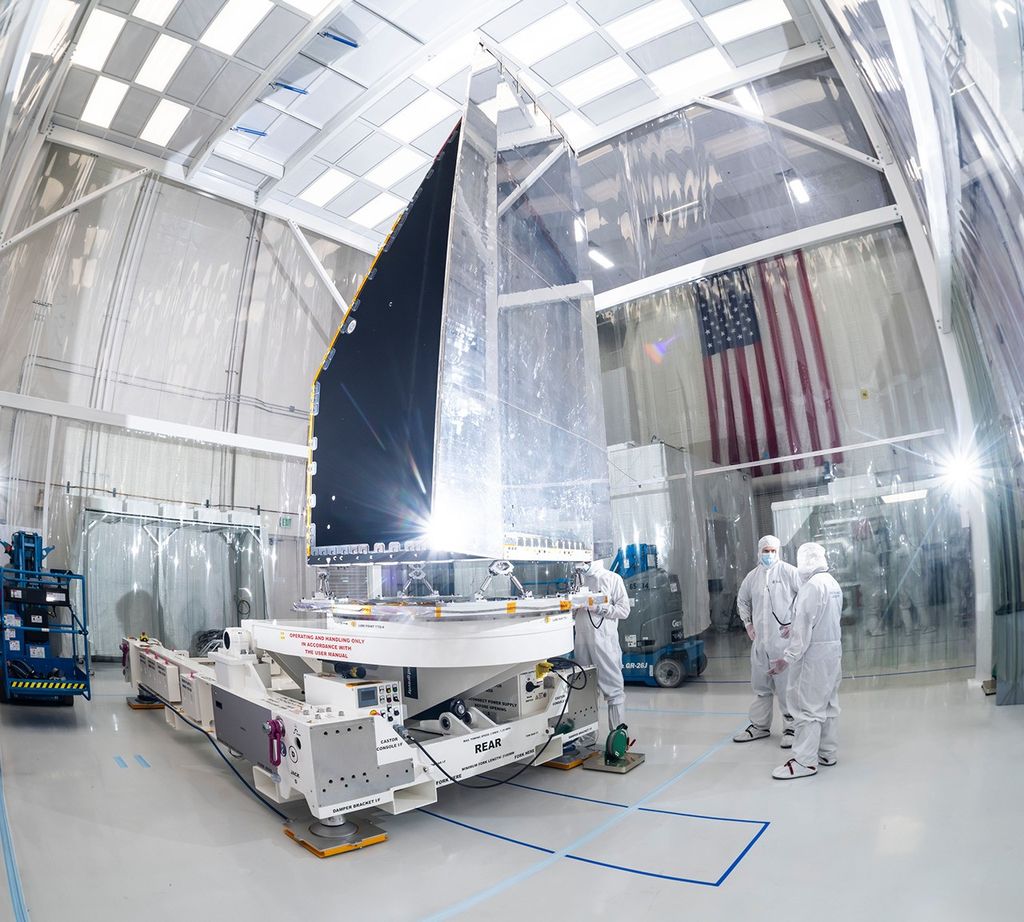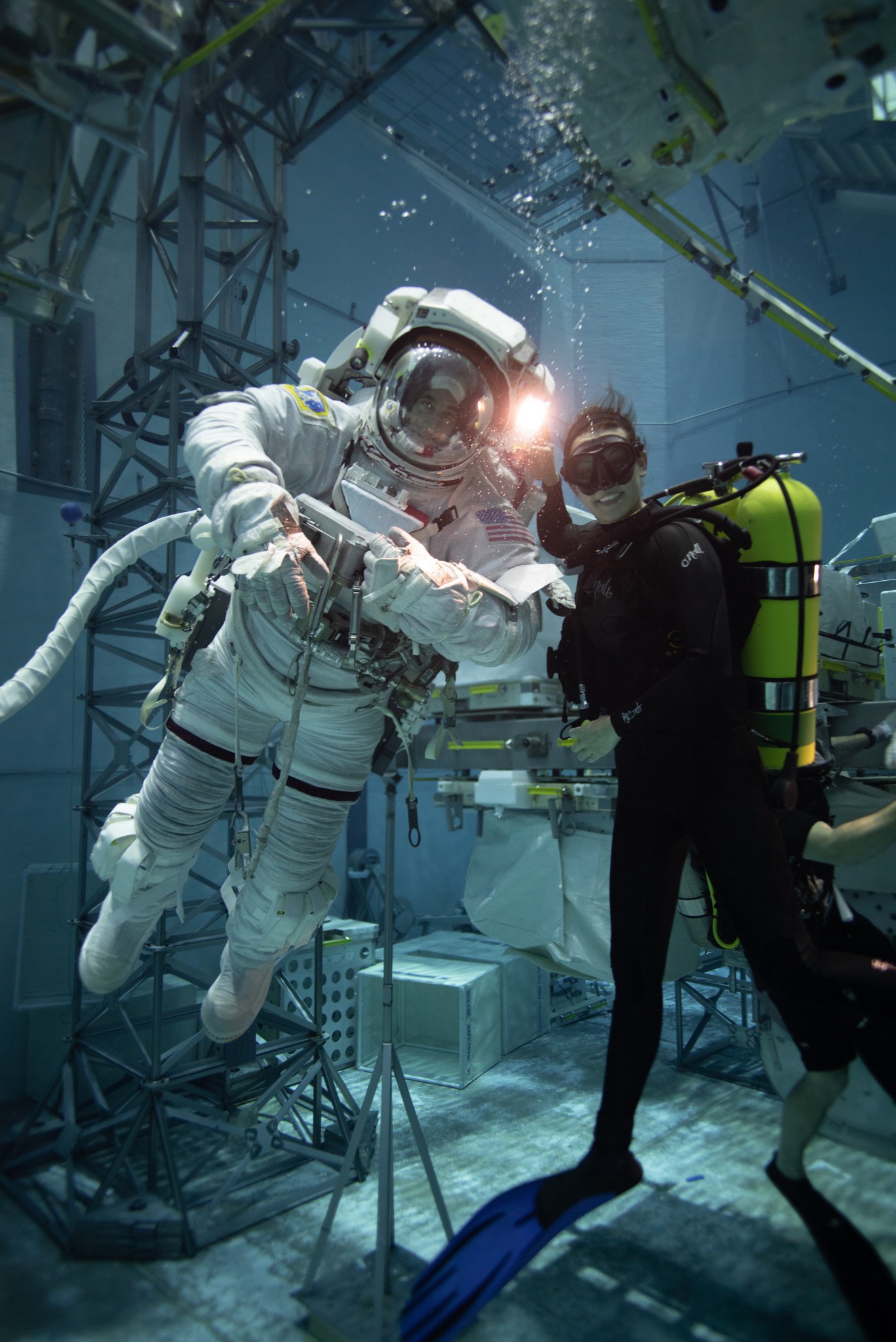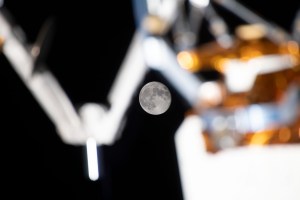Alyssa Yockey supports the International Space Station from NASA’s Johnson Space Center in Houston as a flight lead at the Neutral Buoyancy Laboratory. The Neutral Buoyancy Laboratory is one of the world’s largest indoor pools where astronauts and support teams conduct trainings and other large-scale operations, both in the water and on the pool deck.
In this role, Yockey guides teams through integration efforts, including test readiness reviews to ensure all requirements are met, and helps prepare for suited or other testing events. She ensures smooth planning and execution of each mission-focused activity. Yockey also serves as a safety diver during astronaut suited testing events, giving her a unique perspective on both the planning and execution of Neutral Buoyancy Laboratory operations.
Read on to learn about Yockey’s career with NASA and more!
Where are you from?
Friendswood, Texas.
How long have you been working for NASA?
Eleven and a half years.
What was your path to NASA?
My path to NASA has been a unique blend of science and hands-on experience. I grew up in Friendswood, Texas, surrounded by the influence of NASA and the space community. While many around me were drawn to engineering, I knew early on that wasn’t the path I wanted to take. Instead, I followed my curiosity for the natural world and earned a master’s degree in marine biology, which gave me a strong foundation in research, problem-solving, and working in challenging environments. From there, I pursued opportunities that built on those skills, including completing offshore water survival training at the Neutral Buoyancy Laboratory for the job I held at the time. This role also allowed me to learn more about the wide range of opportunities at the facility. In addition, I became a certified scuba diver during college, which strengthened my capability and confidence in underwater and extreme environments. Together, these experiences combined my academic background with practical training, and ultimately guided me toward my role at NASA.
How would you describe your job to family or friends that may not be familiar with NASA?
When I explain my job to family and friends, I usually say I help make sure “astronaut pool days” go smoothly. I work with different teams to get their projects ready for NASA’s giant pool – the Neutral Buoyancy Laboratory – where astronauts practice for spacewalks both on the International Space Station and on the lunar surface. That means taking care of the paperwork, preparing checklists for mock-up setup, and ensuring everything’s ready before anyone puts on a suit and hops in the water. When I am not doing that, I sometimes have the opportunity to jump in myself as a safety diver, which essentially makes me an underwater lifeguard for the astronauts.
What advice would you give to young individuals aspiring to work in the space industry or at NASA?
The space field is built on innovation and problem-solving, so don't be afraid to ask questions, explore different disciplines, and step outside your comfort zone.

Alyssa Yockey
Neutral Buoyancy Laboratory Flight Lead
Stay curious, be resilient, and never stop learning. Seek internships, research opportunities, and mentorships, as they can open doors and give you hands-on experience. Most importantly, remember that there is no single path into this industry. Whether you come from engineering, science, business, policy, or even the arts, your unique perspective can contribute to pushing the boundaries of what’s possible in space exploration.
Is there a space figure you’ve looked up to or someone that inspires you?
For me, it hasn’t been about looking up to one individual but rather being inspired by the collective effort it takes to make space exploration possible. What inspires me most is seeing how different disciplines and perspectives unite toward a single goal, often under intense pressure. That kind of teamwork and dedication motivates me to give my best and reminds me that every role, no matter how big or small, contributes to the larger success of the space program.
Every mission is the result of countless people—engineers, divers, scientists, technicians, trainers, flight controllers, and more—all bringing their expertise together to solve complex problems.

Alyssa Yockey
Neutral Buoyancy Laboratory Flight Lead
What is your favorite NASA memory or the most meaningful project you’ve worked on during your time with NASA?
My favorite NASA memory is getting to witness, over multiple years, the collaboration of various NASA groups in developing the choreography for the four Alpha Magnetic Spectrometer (AMS) spacewalks. It was incredible to be part of that process from the very beginning. I was lucky enough to see the very first development run at the Neutral Buoyancy Laboratory, and then later watch as ESA (European Space Agency) astronaut Luca Parmitano and NASA astronaut Drew Morgan performed those same spacewalks on orbit. Being able to see all that preparation, teamwork, and problem-solving come full circle was both rewarding and unforgettable.
What do you love sharing about station?
I love sharing how the space station connects directly back to life on Earth. People often think of it only as a place for astronauts to live and work in space, but it’s really a one-of-a-kind laboratory that helps us solve problems here at home. From medical research that leads to new treatments, to technology that improves clean water and sustainability, to international cooperation that shows what we can achieve when we work together—the station is a powerful reminder that exploration drives innovation and benefits everyone on Earth.
November 2, 2025, marks 25 years of continuous human presence. What does this milestone mean to you?
This milestone is inspiring – it represents the innovation, persistence, and teamwork required to make the extraordinary seem routine. Personally, it reminds me why exploration matters: it connects us across nations, pushes the limits of what’s possible, and builds the foundation for the next steps in our journey beyond Earth.
If you could have dinner with any astronaut, past or present, who would it be?
I would choose Karen Nyberg. Not only did she contribute significantly as a NASA astronaut and engineer, but she also brought a very human and creative element to her time in space. I admire how she combined her professional expertise with her passion for sewing and quilting, even creating a quilt block while aboard the space station. As someone who enjoys quilting myself, I think it would be fascinating to hear about how she balanced technical work with creative expression in such a unique environment. I imagine our conversation would cover both science and stitching, which is the perfect blend of my own interests.
Do you have a favorite space-related memory or moment that stands out to you?
One of my favorite space-related memories is getting to meet and chat with former NASA flight director Gene Kranz during a book signing. It was fun to hear stories firsthand from someone who played such a pivotal role in NASA’s history, and to gain insight into the dedication, teamwork, and problem-solving that make spaceflight possible. Meeting him brought history to life and reinforced why I’m grateful to be part of this field.
What are some of the key projects you have worked on during your time at NASA? What have been your favorite?
During my time at NASA, I first served as a dive operations training officer, where I was responsible for training and supporting divers in the Neutral Buoyancy Laboratory. From there, I took on the role of flight lead, supporting a range of projects including Axiom Space’s integration into the Neutral Buoyancy Laboratory, working with the Micro-G Neutral Buoyancy Experiment Design Teams (Micro-G NExT) student experiment design teams, and participating in various lunar operations testing events. Each of these projects has been rewarding in different ways, whether through helping commercial partners prepare for their missions, mentoring and guiding students as they see their concepts come to life, or contributing to the future of lunar exploration. I especially enjoy the challenges each project brings, as they push me to adapt, collaborate across disciplines, and continuously grow in my role.
What are your hobbies/things you enjoy doing outside of work?
Outside of work, I enjoy spending time outdoors with my husband and our pups, traveling and camping in different state and national parks. Hiking is one of our favorite ways to explore new places and take in the scenery together. At home, I like to unwind with a good book or by sewing and quilting. Quilting has become a truly rewarding creative outlet for me — I love selecting fabrics, experimenting with patterns, and watching a design come to life piece by piece. Each quilt has its own story, whether it’s made for a friend, a family member, or simply for the joy of creating something new.
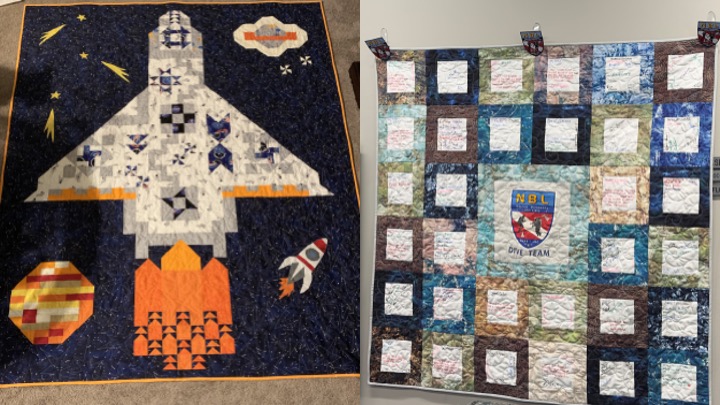
Right: Signature Quilt made by Alyssa Yockey featuring fabric from retired astronaut Karen Nyberg’s “Earth Views” line, created from her favorite photos taken from space.
Day launch or night launch?
Night launch!
Favorite space movie?
Hidden Figures.
NASA Worm or Meatball logo?
Worm!
NASA and its partners have supported humans continuously living and working in space since November 2000. After nearly 25 years of continuous human presence, the space station remains a training and proving ground for the future of commercial space stations, deep space missions, enabling NASA’s Artemis campaign, lunar exploration, and future Mars missions.
Every day, we are conducting exciting research aboard our orbiting laboratory that will help us explore farther into space and bring benefits back to people on Earth. You can keep up with the latest news, videos, and pictures about space station science on the Station Research & Technology news page. It is a curated hub of space station research digital media from Johnson and other centers and space agencies.
Sign up for our weekly email newsletter to get the updates delivered directly to you.
Follow updates on social media at @Space_Station on X, and on the space station accounts on Facebook and Instagram.

